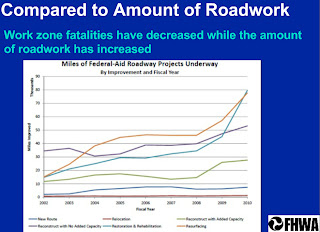FHWA Ruling on ANSI/ISEA Garments for Public Safety Personnel
- Nov 14, 2012

FHWA Mandates High-visibility Safety Apparel Meeting ISEA Standards for All Workers in Highway Rights-of-Way, Workzones
The 2009 revision to the Manual of Uniform Traffic Control Devices (MUTCD), published by the U.S. Department of Transportation’s Federal Highway Administration (FHWA) yesterday, requires workers, including emergency responders, along highway rights-of-way or in workzones to wear high-visibility apparel whenever they are exposed to moving traffic, work vehicles or construction equipment. The apparel must meet Performance Class 2 or 3 requirements of ANSI/ISEA 107-2004, the American National Standard for High Visibility Safety Apparel and Headwear. This requirement also applies to firefighters, emergency responders and law enforcement personnel working within the right-of-way. As an option, emergency responders and law enforcement personnel may wear garments that meet the standard for high-visibility public safety vests, ANSI/ISEA 207-2006. A separate section of the MUTCD, which covers specific requirements for flaggers, also requires the use of ANSI/ISEA 107-compliant apparel, and specifies that background material must be fluorescent orange-red, fluorescent yellow-green "or a combination of the two as specified in the ANSI standard."

Previously, the FHWA only required workers in federal-aid highway workzones to use these garments.
The revised MUTCD states: "All workers, including emergency responders, within the right-of-way who are exposed to traffic (vehicles using the highway for purposes of travel) or to work vehicles and construction equipment within the [Temporary Traffic Control] zone shall wear high-visibility safety apparel that meets the Performance Class 2 or 3 requirements of the ANSI/ISEA 107-2004 publication entitled ‘American National Standard for High-Visibility Safety Apparel and Headwear’ (see Section 1A.11) or equivalent revisions, and labeled as meeting the ANSI 107-20004 standard performance for Class 2 or 3 risk exposure, except as provided in paragraph 5… Emergency and incident responders and law enforcement personnel within the [Temporary Traffic Control] zone may wear high-visibility safety apparel that meets the performance requirements of the ANSI/ISEA 207-2006 publication entitled ‘American National Standard for High-Visibility Public Safety Vests’ (see Section 1A.11) or equivalent revisions, and labeled as ANSI 207-2006, in lieu of ANSI/ISEA 107-2004 apparel…"

The revised MUTCD takes effect January 15, 2010. Workers on non-federal highways will have to be in compliance with the high-visibility safety apparel requirements by December 31, 2011.












